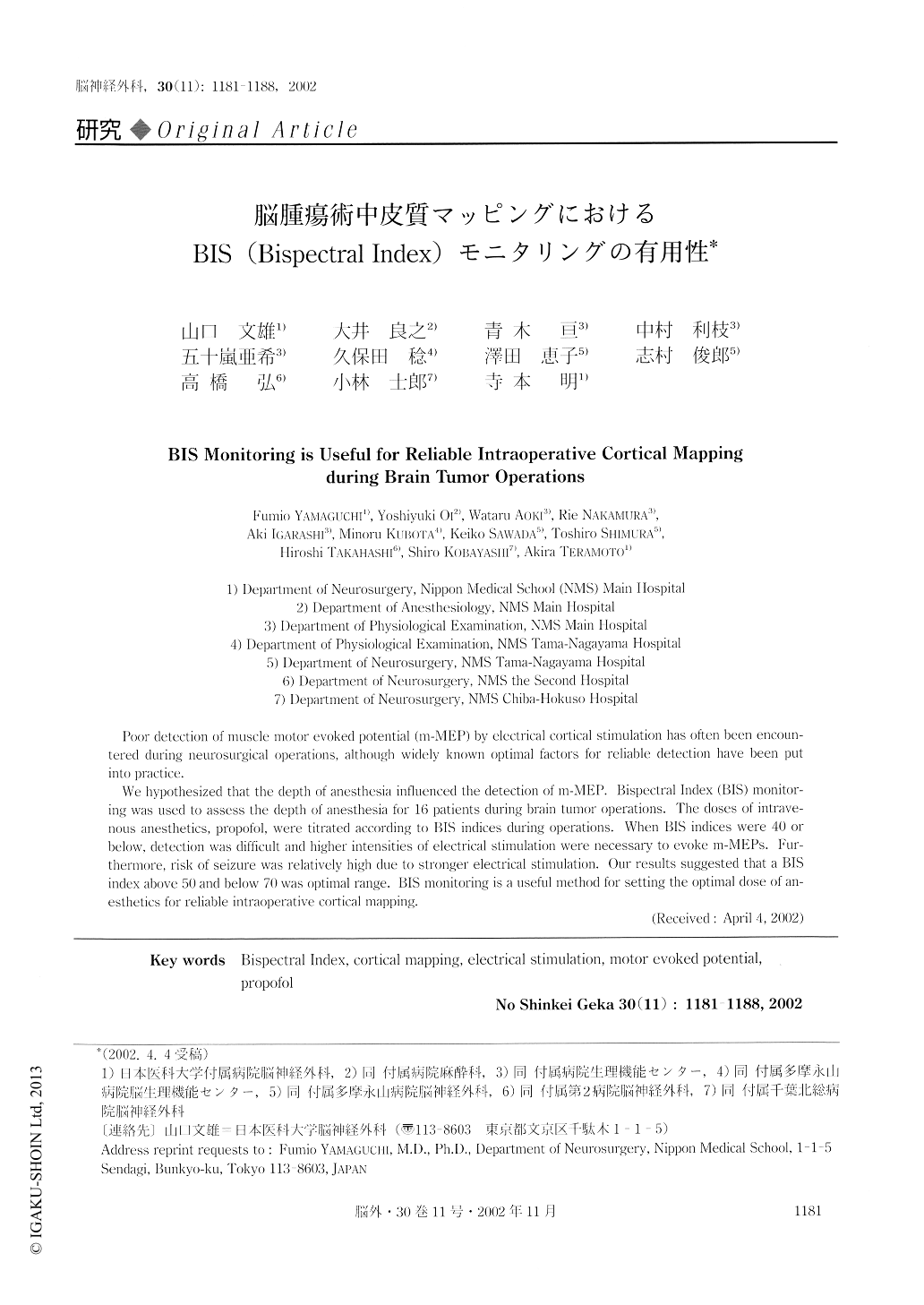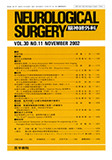Japanese
English
- 有料閲覧
- Abstract 文献概要
- 1ページ目 Look Inside
Ⅰ.はじめに
大脳1次運動野近傍腫瘍摘出時の運動野皮質マッピングは近年一般的に行われるようになってきた.われわれの施設でも1999年より皮質電気刺激による誘発筋電図記録を行っている.安定した記録を得るために,筋弛緩をまねく薬剤の使用を避けることや患者体温を35.5℃以上に保つことなどを行ってきたが,症例によっては誘発筋電図が得られないことがあり,さらにその原因を検討してきた.術中に投与する麻酔薬は一般的に大脳皮質錐体細胞や軸索,さらに脊髄前角細胞の刺激閾値を上昇させるため31),運動誘発電位に悪影響を与える可能性がある.
そこで今回,マッピングに影響する因子として麻酔深度に着目した.麻酔深度を測定する方法としてBIS(Bispectral Index)21)が麻酔科領域で普及してきており,心臓手術における患者の意識レベルをモニター24)したり,一般麻酔時でも麻酔薬の投与量の指標に有効とされている11,15,25).BISは脳波の多因子情報を1つの数値に変換し麻酔深度を表現する方法で,100が全覚醒,0が脳の電気的活動がない状態となる.一般的にBISが70以下であれば麻酔中の記憶がなく,60以下であれば意識がない状態であると言われている7,15,16).
Poor detection of muscle motor evoked potential (m-MEP) by electrical cortical stimulation has often been encoun-tered during neurosurgical operations, although widely known optimal factors for reliable detection have been put into practice. We hypothesized that the depth of anesthesia influenced the detection of m-MEP. Bispectral Index (BIS) monitor-ing was used to assess the depth of anesthesia for 16 patients during brain tumor operations. The doses of intrave-nous anesthetics, propofol, were titrated according to BIS indices during operations.

Copyright © 2002, Igaku-Shoin Ltd. All rights reserved.


